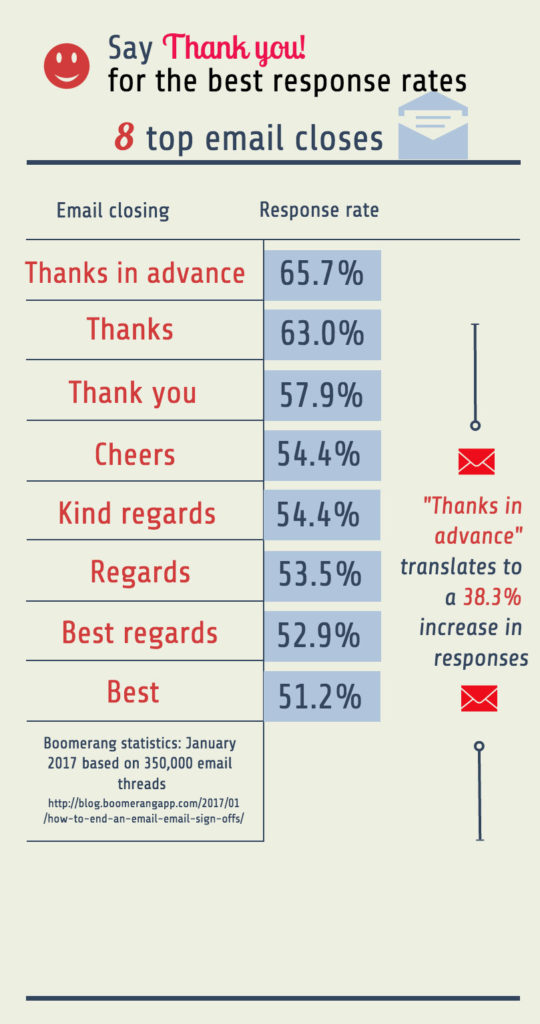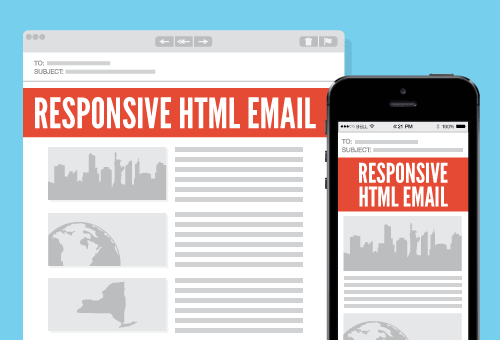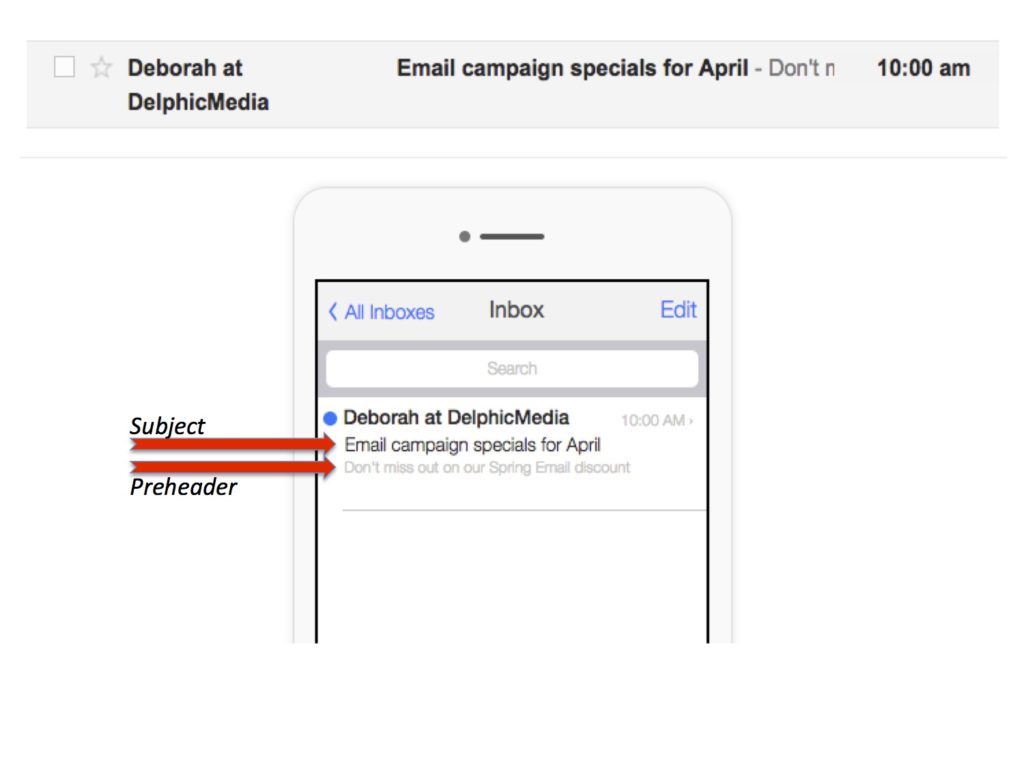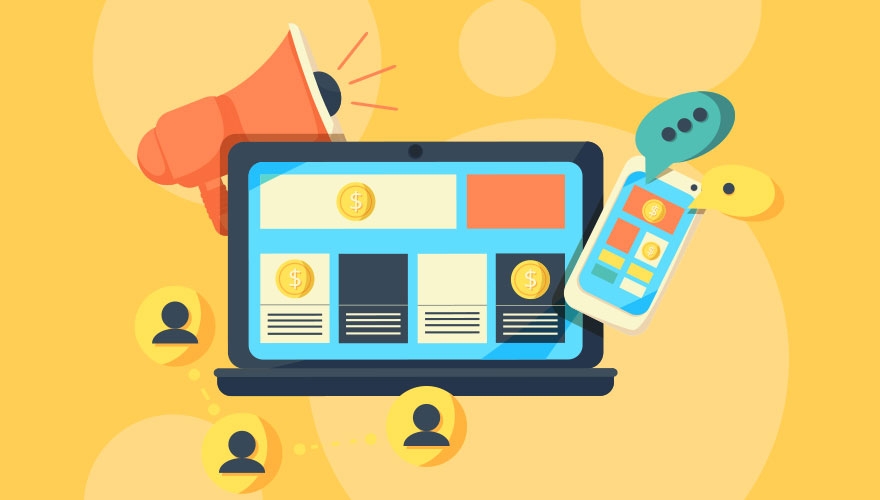8 Top Email Closes
I’m guilty of email glut. By that I mean I just don’t open all my emails in a timely manner. I let them flounder in any one of several inboxes. My intentions are honorable. I sign up for everything that interests me and look forward to boundless missives of revelation, information, calls to action, free offers with restrictions, and promises that never truly materialize. I don’t mean to infer that a bulk of email is not valuable – a lot of it is. But alas, a lot of it isn’t. Of course, I answer client email immediately but I have the luxury of waiting to respond to everything else. Most people do the same thing. They have multiple email boxes to help weed out the wheat from the chaff – so to speak. So what makes me more likely to respond to an email when it isn’t essential? Evidently, it comes down to a few simple words.
Productivity software provider, Boomerang, conducted a survey earlier this year and discovered something interesting. The right closing line in an email could compel subscribers to respond. Of course, it’s not just the closing line that determines response rate. Marketers know they’re competing for attention in very cluttered inboxes so emails have to be focused and targeted to the right community. Every word counts. That’s why the final words are so important.
Brendan Greenley, a Boomerang data scientist, looked over 350,000 email threads to determine the closings and respective response rates. Eight email sign-offs appeared over 1000 times each but one stood out as the clear winner. “Thanks in advance” turns out to be the most effective email closing. “Emails that closed with a variation of thank you got significantly more responses than emails ending with other popular closings.”
It’s just like your mother always told you. Remember to say “Please” and especially, “Thank you”.





